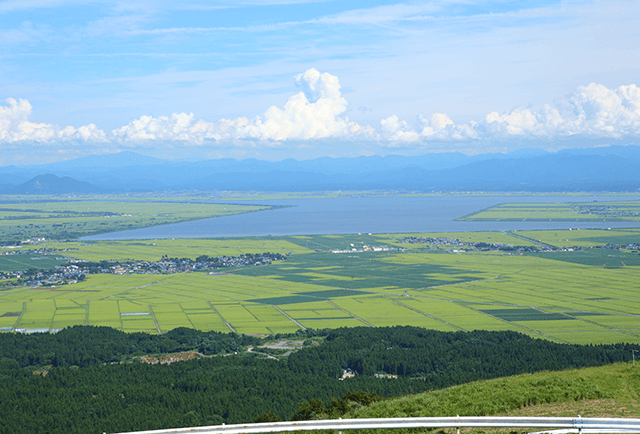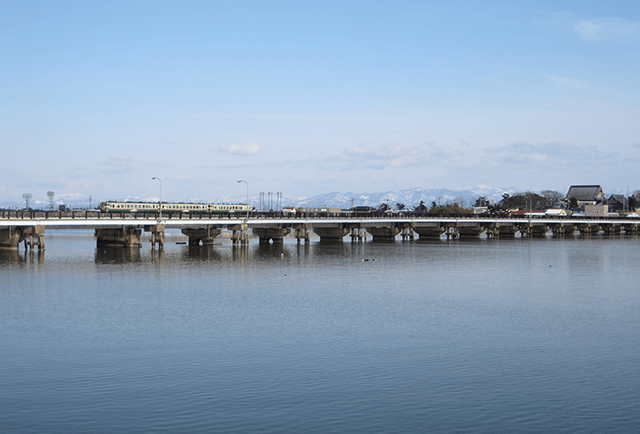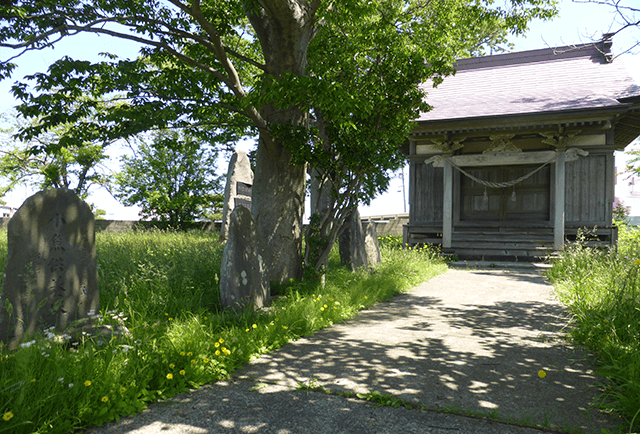-
title Relict Lake of Hachirogata Lagoon one word explanation remnants of former Hachirogata Lagoon keywords historynatureculture confirm, register ー conservation laws and ordinances ー 
This is the water that remained after the Hachirogata Lagoon land reclamation project undertaken from Showa 1957-1977. Originally a brackish lake, it was closed off by a tide gate consisting of 11 pylons and is now a freshwater lake. The lake’s area is about 4,000ha, making it smaller than Lake Towada.
-
title Tide Gate one word explanation remnants of former Hachirogata Lagoon keywords historylegendnature confirm, register ー conservation laws and ordinances ー 
Hachirogata Lagoon was a brackish lake connected to the Sea of Japan. After the reclamation, it was separated from the sea by the tide gate built by the Funakoshi Waterworks, creating a freshwater lake. The 370m gate not only regulates the flow of seawater, but also that of water from the surrounding area, maintaining the level of water in the lake.
-
title Hachiryu-bashi Bridge one word explanation toll bridge that opened in 1878 keywords naturehistorylegend confirm, register ー conservation laws and ordinances ー 
This bridge between Tenno and Funakoshi was built as a toll bridge in 1880 to repay the two towns’ debts. The total length of the bridge is 540m. It continued to be used as a toll bridge until 1886. In 1976, it was repaired to its present state.
-
title Hachiryu Shrine and Memorial Stone of Thanks to Fish one word explanation the god of fishery and a memorial service for fish keywords historynatureculture confirm, register Oga City Tangible Folk Cultural Properties conservation laws and ordinances Oga City Ordinance for the Protection of Cultural Properties 
Venerated by local fishermen, Hachiryu Shrine was once a sandbar that jutted out into Hachirogata Lagoon. Before the land reclamation in this area, Hachirogata Lagoon had a booming fishing industry. The local fishermen gave thanks to the god Hachiryu for their good catches and erected stone monuments to appease the ghosts of the fish they caught. The oldest of these, the Memorial Stone of Thanks to Lake Mullets, was built in 1861. In addition, the fishermen and local officials of Funakoshi built a stone monument as a stone of protection for the shore in gratitude to Hachiryu. Designated as cultural resources by the city, these monuments are important in preserving the local folklore and worship of Hachiryu.
Relict Lake of Former Hachirogata Lagoon
Home >
What is the Oga Peninsula - Ogata Geopark? >
Geosites and spots >
south coast area >
Relict Lake of Former Hachirogata Lagoon

